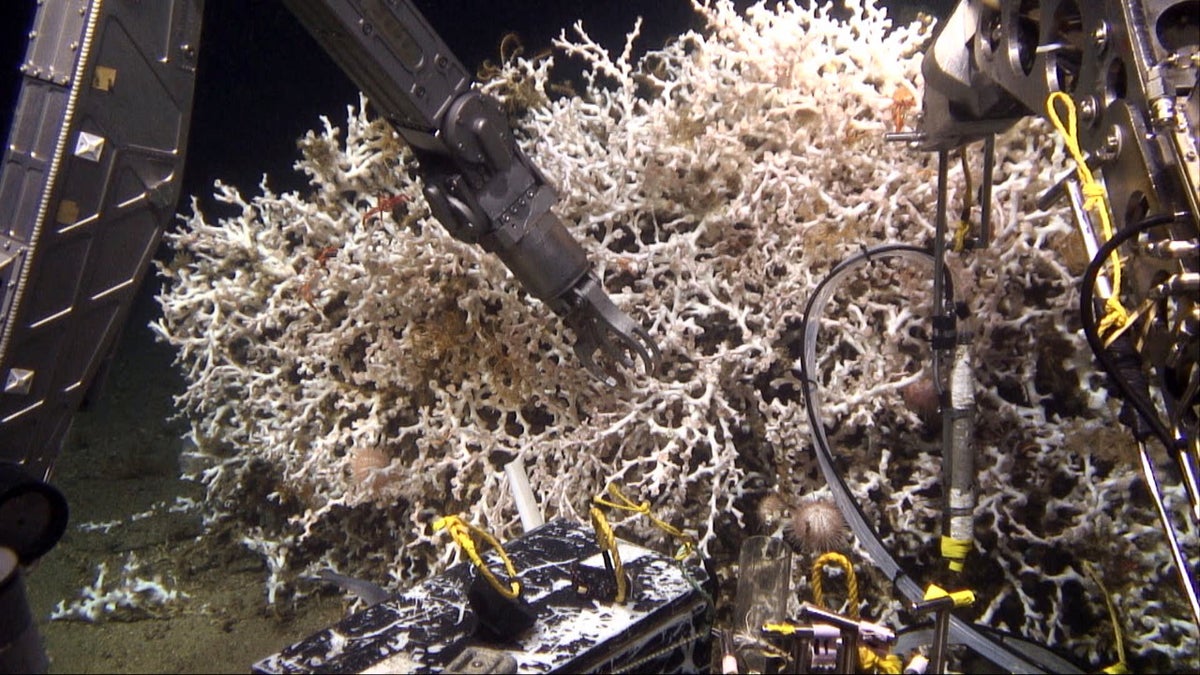Temple researchers say dispersant used to clean 2010 oil spill was at least as toxic to corals as the oil
Listen
Samples of deep sea corals are taken by Temple researchers below the Gulf of Mexico. (Photo courtesy of Ivan Hurzeler
What’s worse for deep-sea corals – oil spills or the cleanup?
A recent study out of Temple University found that the dispersant used to clean up the 2010 Deepwater Horizon oil spill in the Gulf of Mexico was at least as toxic to cold-water corals as the oil itself.
“You have tissue falling off the [corals’] skeleton, you have dying polyps that are no longer feeding, the tissue can be discolored, they’re secreting a lot of mucus, so they’re definitely not healthy corals,” said Danielle DeLeo, a Temple doctoral student and the study’s lead author.
Researchers from Temple University and Pennsylvania State University exposed three cold-water coral species from the Gulf to various concentrations of the dispersant and oil from the Deepwater Horizon well. They discovered that the dispersant used was at least as damaging to corals as the oil.
Dispersants are chemicals that break down the oil so it can mix more easily with the water. By doing so, the effects of the oil spill are not eliminated, just pushed underwater. Usually, dispersants are applied to the water’s surface, however, for the first time, the Environmental Protection Agency (EPA) approved using dispersants underwater at the source of the spill, according to the Center for Biological Diversity. The center reported that approximately 1.84 million gallons of dispersant was applied – more than 1 million gallons on the surface and 771,000 gallons underwater.
After the five-million-barrel spill, Erik Cordes, an associate professor of Biology at Temple University, and his collaborators visited their coral sites in the Gulf. Cordes has been studying the health of corals in that area for about 15 years. When they arrived, they found that four of the sites were heavily damaged.
“The corals at those sites were covered in oil when we first found them,” Cordes said. “They were beginning to degrade, there was tissue falling off of the skeleton, they were in really bad shape.”
Follow up studies determined the dark slime on the corals contained both oil and residue from the dispersants.
The impact of dispersants on corals hasn’t been adequately tested. The EPA even acknowledged that “long term effects [of dispersants] on aquatic life are unknown.” DeLeo is hoping that the results of this study will encourage people to use alternatives to traditional dispersants.
“I hope that it will prevent people from just quickly applying these types of dispersants to communities where the toxic effects aren’t well known and kind of encourage people to come up with more natural, less toxic, dispersants in the event of another oil spill,” DeLeo said.
WHYY is your source for fact-based, in-depth journalism and information. As a nonprofit organization, we rely on financial support from readers like you. Please give today.



